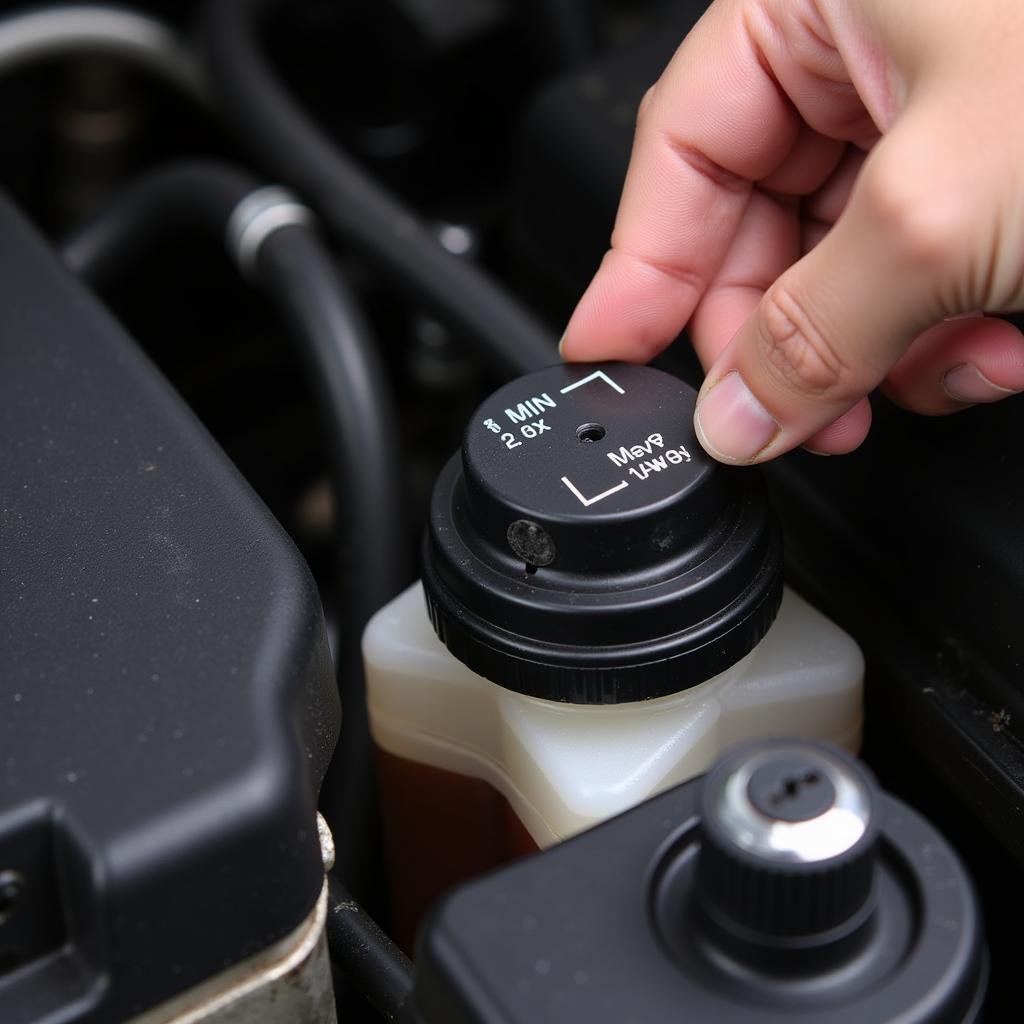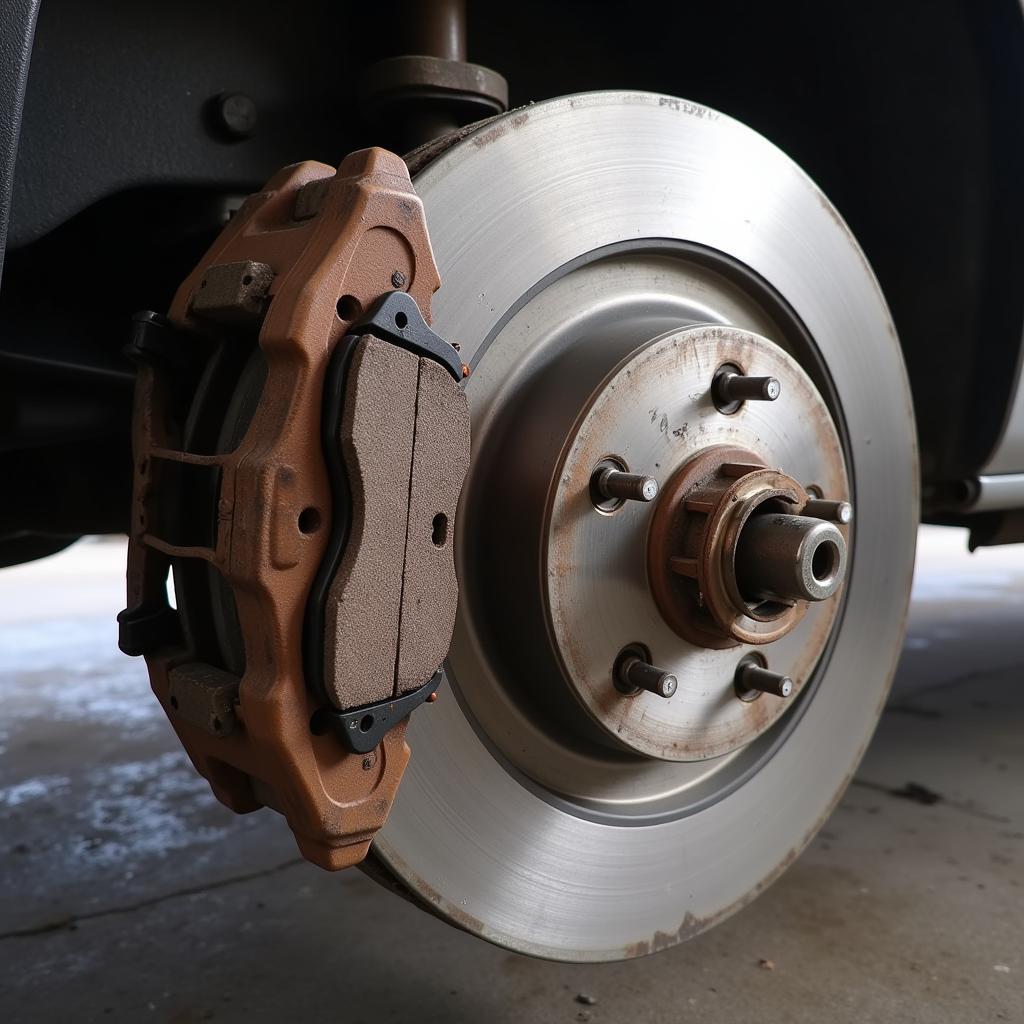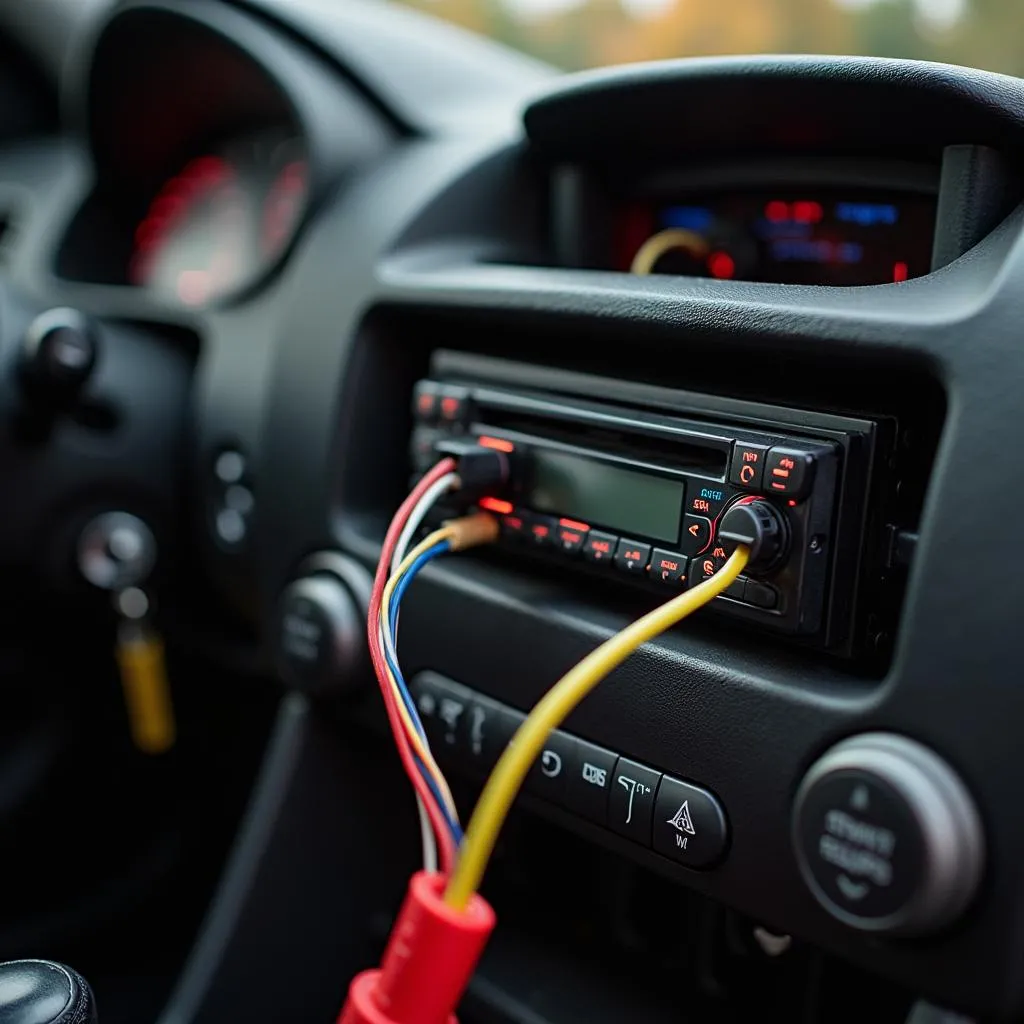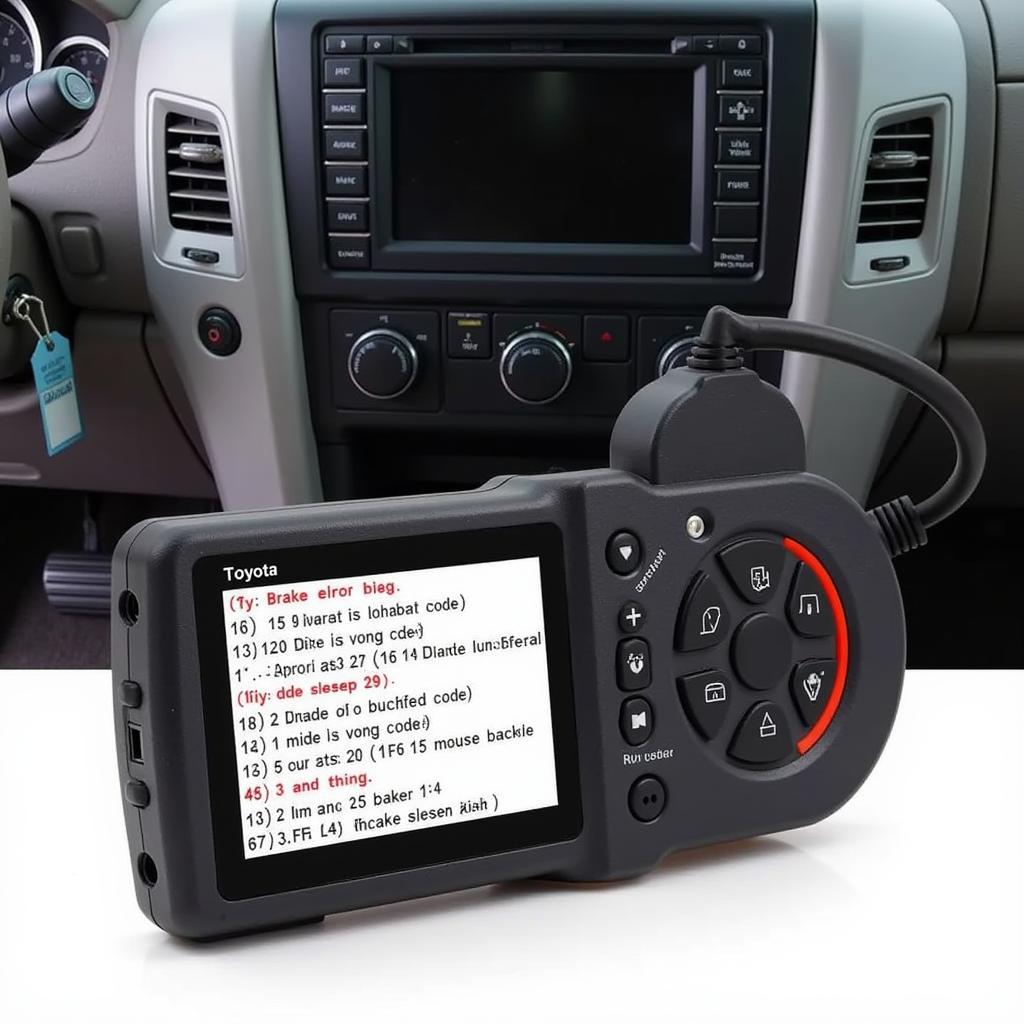A glowing brake warning light on your Silverado’s dashboard can be a real nuisance. Whether it’s a persistent chime or a constant reminder on your display, this little light can quickly become a distraction. While it’s essential to take any brake warning seriously, there are times when the light might be triggered unnecessarily. This guide will help you understand the common causes of a Silverado brake warning light and provide you with a step-by-step approach to turning it off.
Understanding Your Silverado Brake Warning System
Before we delve into the solutions, it’s important to understand what triggers the brake warning light in the first place. Your Silverado is equipped with a sophisticated braking system designed with safety in mind. The warning light is connected to several components, and it illuminates when any of these systems detect an issue:
- Low Brake Fluid: This is the most common culprit behind a Silverado brake warning light. The system is designed to alert you when the brake fluid level in the master cylinder drops below a safe level.
- Parking Brake Engaged: Sometimes, the simplest solution is the right one. If your parking brake is even slightly engaged, it can trigger the warning light.
- Faulty Brake Light Switch: The brake light switch is responsible for activating your brake lights when you press the pedal. A malfunctioning switch can disrupt the signal, leading to a false warning light.
- Worn Brake Pads: Your Silverado’s brake pads are equipped with wear indicators. When the pads wear down to a certain point, these indicators make contact with the rotor, triggering the warning light.
- ABS Issue: While less common, a problem with your Anti-lock Braking System (ABS) can also trigger the brake warning light. This usually indicates a sensor malfunction or an issue with the ABS control module.
Troubleshooting Your Silverado Brake Warning Light
Now that you have a better understanding of the potential causes, let’s walk through a systematic approach to identifying the root cause and turning off that pesky brake warning light:
1. Check Your Parking Brake:
Begin with the easiest check. Ensure your parking brake is fully released. Even a slight engagement can trigger the warning light.
2. Inspect Your Brake Fluid:
Park your Silverado on a level surface and pop the hood. Locate the brake fluid reservoir – it’s typically a translucent plastic container mounted on the driver’s side of the engine bay. Check the fluid level. If it’s below the “MIN” mark, you’ll need to add brake fluid.
 Checking Silverado Brake Fluid Level
Checking Silverado Brake Fluid Level
3. Inspect Your Brake Lights:
Have a friend or family member press the brake pedal while you stand behind the vehicle. Ensure all brake lights (left, right, and center) are working correctly. If one or more lights are out, it’s a strong indicator of a faulty brake light switch.
4. Check Your Brake Pads:
Inspect your brake pads through the spaces between the wheel spokes. You’ll be looking for a thin metal tab sticking out from the brake pad. This is the wear indicator. If the indicator is touching the rotor or is significantly close, your brake pads are due for replacement.
 Silverado Brake Pads with Wear Indicator
Silverado Brake Pads with Wear Indicator
5. Seek Professional Help:
If you’ve gone through the above steps and your brake warning light persists, it’s time to call in the professionals. A qualified mechanic or dealership can diagnose the issue using advanced diagnostic tools and address the root cause.
When in Doubt, Don’t Hesitate to Consult a Professional
While this guide provides general guidance on troubleshooting a Silverado brake warning light, it’s crucial to prioritize safety. If you’re unsure about any step or suspect a more serious issue, it’s always best to consult with a qualified mechanic. Your brakes are a critical safety system – don’t take any chances.
Frequently Asked Questions
1. Can I drive my Silverado with the brake warning light on?
It’s highly discouraged. While the severity of the issue can vary, driving with a brake warning light on puts you and others at risk.
2. How much does it cost to fix a Silverado brake warning light?
The cost can vary widely depending on the underlying cause. Simple fixes like adding brake fluid are relatively inexpensive, while more complex repairs like replacing an ABS control module can be costly.
3. How often should I check my Silverado’s brake fluid?
It’s good practice to check your brake fluid level at least once a month.
4. Can I add any type of brake fluid to my Silverado?
No. Refer to your owner’s manual for the recommended brake fluid type and specifications. Using the wrong fluid can damage your brake system.
5. Is it normal for my brake warning light to flicker occasionally?
Occasional flickering could indicate a loose connection or a failing sensor. It’s best to get it checked by a professional.
how to program anti theft module on 08 silverado
Remember, a well-maintained vehicle is a safe vehicle. By staying proactive with your Silverado’s brake system and addressing any warning lights promptly, you can enjoy many miles of safe and worry-free driving.


